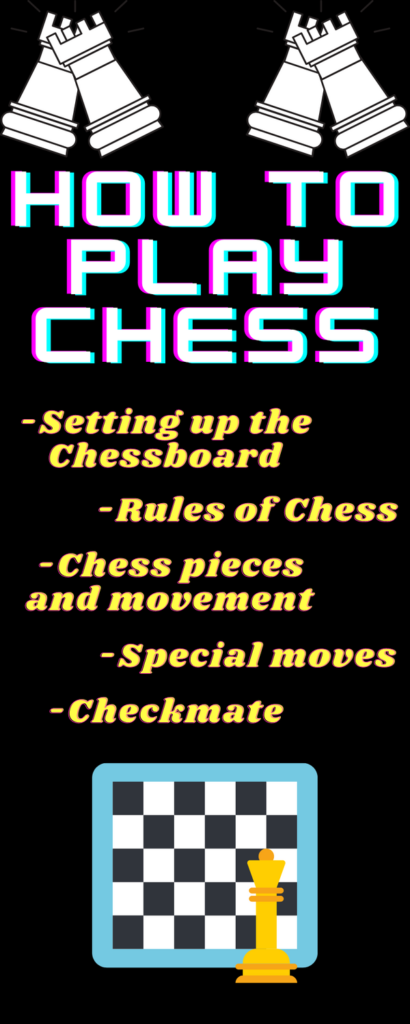
Here is an infographic I put together that illustrates the ideas that need to be learned in order to go ahead and start playing chess. It serves as an outline for the lesson plan that was prepared.
One of the most iconic board games in the world is Chess. The reason being is that essentially anyone can play it. Although it is generally simple in nature, in actuality chess is a complex thinking game. A game where you have to try and outsmart your opponent to win. There are many unique strategies that people emulate when playing chess, but in order to get to this point, you must learn the basics.
The attached lesson plan will help guide you throughout the basics of the game of chess and essentially help you familiarize yourself with this masterpiece (get it? because you use pieces in chess) of a game.
https://docs.google.com/document/d/1qgK1wOCzRG2lrZoJiKxWKZc6phbjMUWwdWdnOuahl70/edit?usp=sharing
The Introduction to the chess lesson plan has the application of both Dual-coding and cognitive theory because the learner is being introduced to new information in the form of text and visuals. With this, information is then moved into their working memory so if they ever want to play chess, they are able to integrate what they learned from the lesson and access it from their long-term memory.
- Here are the multimedia principles that were followed in the creation of the lesson plan and the other multimedia objects that I prepared.
The coherence principle states that people learn more when they are presented with material that doesn’t involve extra/distracting material. In general, keeping the lesson plan simple and easy to follow makes the designated audience relate directly to what is being taught and they are therefore able to learn the key information easily.
The spatial contiguity principle is about the space in between the text and visuals. It states that people learn best when relevant text and visuals are physically close together. In the lesson plan, I made sure to keep visuals and the related text regarding that certain visual generally close to one another. This makes it easier for the learner to process the information and use less energy to try and decipher the meaning behind the visual. I designed the lesson so that the audience is able to know where to locate the information I’m trying to convey easier. With the infographic I prepared, learners are quickly able to identify what they are about to learn and it is presented in a manner that is eye-catching.
The segmenting principle states that people learn more deeply when the information is presented in segments, rather than one long single continuous segment. The lesson plan is divided into different categories so that it is easier for the learner to refer to a certain segment and thus lowers the workload on their cognitive minds. With the different categories in the lesson plan it is better for the learner to control the pace at which they learn and thus perform better when accessing their long term memory.
The multimedia principle states that people learn the most when they are introduced to words and pictures rather than just words alone. In the lesson plan that I prepared, I accompanied my lesson with photos so that it wasn’t all text. This gives the learner something to refer to when going through the lesson plan.
When preparing a lesson plan, it is important to keep in mind how you want your learners to succeed by voluntarily (or sometimes involuntarily) applying these principles of multimedia learning. These principles ensure the learners have an easier time learning the lesson at hand because instead of overworking them, the principals allow the information to be stored in their working memories for better recollection from their long-term memories. By applying these principles to multimedia learning, it lessens the confusion of the topic while increasing the engagement of the student. It makes it so that you do not spend countless of hours just for you to fall short of your goal. Instead, these principles keep you organized. With good preparation and organization it is easier for both the learner and the educator.
Recent Comments